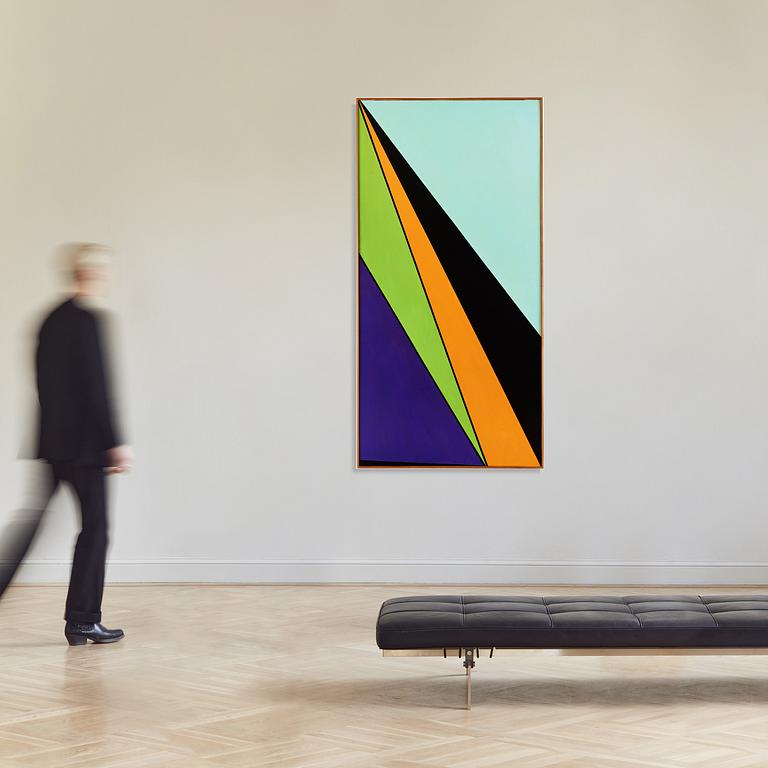Olle Bærtling
"SERGAE"
Signed Bærtling and dated 1962 verso. Canvas 195 x 97 cm.
Alkuperä - Provenienssi
Acquired in the 1960s.
Thence by descent to the present owner.
Muut tiedot
Like many other artists, Baertling experienced resistance during his time, for a long time he was in Sweden "the ever-controversial banker who tried to paint", although unlike many contemporary artists he reached far beyond the borders of his home country during his lifetime. From the 1940s onwards, Baertling's painting developed from the figurative towards the non-figurative. When the borders opened up after the Second World War, Baertling, like many others, headed for the new art's hunting grounds - France. The 1950s was Baertling's defining decade. In the early years of the 1950s, he took longer and longer breaks from his banking job at Skandinaviska Banken and travelled to Paris. There, in the Mecca of art, he came into contact with the new artistic movements at the Salon des Réalités Nouvelles and sought out artists such as André Lhote, Fernand Léger, Victor Vasarely, Richard Mortensen and Auguste Herbin. The latter was crucial to his further development as an artist. Herbin introduced Baertling to the far-sighted gallerist Denise René, who immediately installed him in her 'stable' of Constructivists.
Baertling abandoned the optical art that had inspired him for some time and began to create his own style in which triangles and diagonals became the main theme. From basic geometric elements, he built up a new visual world of measurements, proportions and synthetic, programmed colour tones. Intense colour fields enclosed in black diagonal contours create a dynamic that few other artists have achieved. The black lines which are slightly arc-shapes were assessed by Baertling at the very end. In the 1960s, as is evident in the auction's "SERGAE", the angular tips were moved outside the picture surface, thus creating his "open form", in which the reflections on intersecting directions in space were given their compositional form. The title derives from Sergels torg (Sergel’s Square), in Stockholm.
Baertling preferred artificial shades of colour that did not evoke natural associations and believed that black was a magical colour, light, happy and beautiful. Gunnar Berefelt describes the effect of the colours on each other as follows: "Probably the most tangible and active effect in Baertling's art is the boundary contrast: when two colours are given a sufficiently long and distinct boundary, they seem to alternately enter the domain of the neighbouring colour. It is precisely at the boundary line that the two colour fields oscillate and flutter."





















































